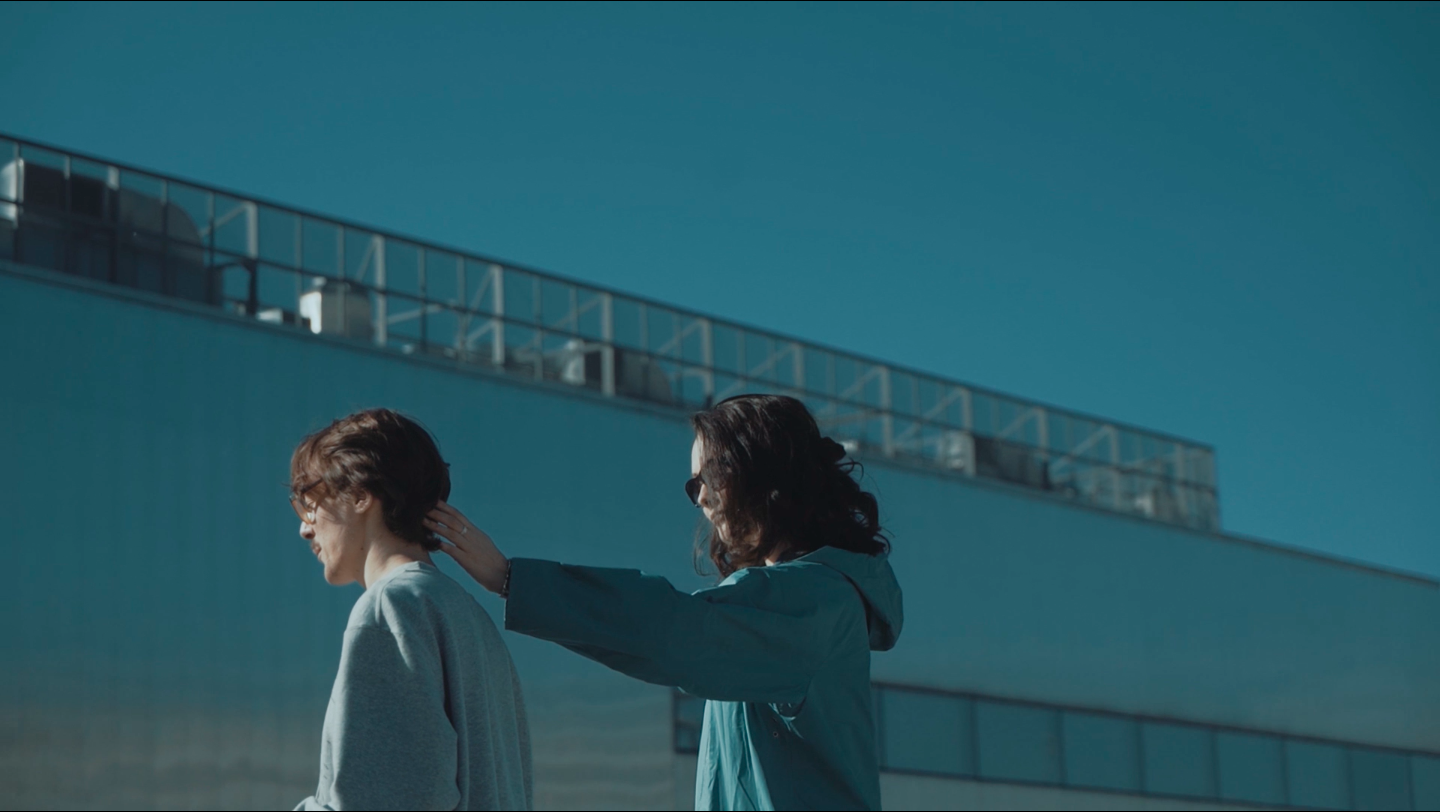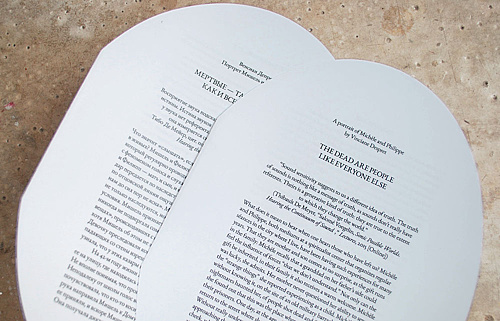After 5 years of workshops, talks and exhibition Infinite Ear is invited to Moscow, for an exhibition at Garage Museum of Contemporary Art. The project for Moscow included a research phase on Russian Deaf culture, which details you can find here. Alongside some elements from the previous exhibitions, the show features new artworks and sonic exercises. You can download the booklet of the exhibition here.
.jpg?w=500)
Infinite Ear, 2018, installation view, Ph. Garage Museum of Contemporary Art
The twentieth-century museum was constructed based on the misleading idea that some people are able to perceive, move, think, and feel more than others. From this perspective, a museum accessible to all implies that “disabled” visitors need specific mediation to reach this norm. Let’s imagine a museum based on the idea that there are many ways to be “differently able” and therefore many ways to perceive an art work. A museum where time, space, and the experience of an art work would take into account our various sensing and neuronal conditions.
Infinite Ear would like to contribute to this future institution by considering the many forms of deafness as abilities to hear. What did Beethoven actually hear when writing his Ninth Symphony, given that he was almost completely deaf? Do hearing people all hear the same sound when this symphony is played? Can anyone access the totality of an art work, and do we need to have such access to be moved by it?
Infinite Ear has been developed for Garage as a performative exhibition where different modes of hearing—tactile, visual, and imaginary, among others—are harmoniously dissonant. Constructed around three ensembles of works, the exhibition is a space to experiment, understand, and feel sound in a radically different way.
.jpg?w=500)
WITHIN, installation view, Ph. Garage Museum of Contemporary Art
Tarek Atoui’s collection of instruments WITHIN was conceived during a long-term process of learning from deaf culture. The design of the instruments and their playability are the result of workshops and residencies in which Atoui worked with deaf and hearing people, acoustic instrument makers, speaker designers, software engineers, and composers. When left unplayed, the instruments in the exhibition seem mute, but they produce imperceptible sounds that can be heard or felt by those approaching them. At the opening and closing of the exhibition, the instruments are played live by a group of professional and amateur, hearing and deaf musicians. Through WITHIN, Atoui challenges the ways in which deafness can influence our understanding and appreciation of sound’s performance, its space, and its instrumentation.
.jpg?w=500)
Alison O'Daniel, The Tuba Thieves, 2013–ongoing, installation view, Ph. Garage Museum of Contemporary Art
Sound is also the main character of Alison O’Daniel’s practice. Noise, collaborations with deaf and hard of hearing performers, listening, and reimagining the function of a soundtrack all inform the script of her films and the shape of her sculptures. Musicians and concerts are recurring figures in her film The Tuba Thieves and sound is shifted away from the ears into visual clues in her three sculptures Line of Sight, The Audiologist’s Poem, and Nyke and the New York Kite Enthusiasts in Santa Monica. The Tuba Thieves features stories directly referencing deaf and hard of hearing people’s experiences with sound, which include hypersensitivity toward social norms, variations around volume, heightening of other senses, invention of languages, delays in comprehension, frustration, disorientation, humor, and misinterpretation. As someone who is hard of hearing and grew up in the hearing world, O’Daniel’s practice aims to honor everyone’s relationship to sound. Everyone can access her work, but always partially, and that part differs according to the visitor’s way of hearing.

Workshop for, A (mis)reader's Guide To Listening,June 2018, still from exhibition teaser, ©Garage Museum of Contemporary Art
The third ensemble, A (Mis)Reader’s Guide to Listening, is a specific mediation conceived for all visitors to the exhibition. Developed by Lendl Barcelos, Valentina Desideri, and Myriam Lefkowicz, the work is a fluid combination of artistic, therapeutic, musical, conceptual, esoteric, and poetic practices. It was conceived as the result of a collaborative workshop with mediators who have various relationships to the body, sound, and deafness. Placed at the intersection of different fields of knowledge, A (Mis)Reader’s Guide to Listening reveals how the visitor’s body participates in the interpretation of a work, and proposes other ways of sensing that may expand the work’s interpretation within and beyond the exhibition space. Visitors will end their journey with third-party testimony.

Goda Budvytyteė, Infinite Ear: Portraits, 2018, Ph. Julie Hénéault
Designed by Goda Budvytytė, Infinite Ear: Portraits is a collection of stories of individuals who have experienced a transformation in their perception of sound, a transformation that has affected their hearing ability or that has prompted a new relationship to sound. In the exhibition space visitors can find printed stories of a survivor of torture, an artist who became deaf at an early age, a museum inclusive program manager, a writer who had to adapt to having cochlear implant, a psychic who can hear the dead. They are the work of sound artist Lawrence Abu Hamdan, writer Louise Stern, deafhood specialist Mara Mills, writer and performer Sophie Wooley, and philosopher Vinciane Despret.
Infinite Ear is an exhibition where each work can be perceived differently, challenging preconceived ideas and expectations of normativity and accessibility.
Infinite Ear is an exhibition by Council
With
- Tarek Atoui
- Lendl Barcelos
- Goda Budvytytė
- Valentina Desideri
- Myriam Lefkowitz
- Alison O'Daniel
WITHIN
- Instruments and performances
- conceived by
- Tarek Atoui
- with
- Julia Alsarraf
- Daniel Araya
- Johannes Goebel
- Kvadrat
- Jeff Lubow
- Thierry Madiot
- Perrin Meyer
- Greg Niemeyer
- Quartet Mats Lindström
- Espen Sommer Eide
A (MIS)READER'S GUIDE TO LISTENING
- Collective and individual sonic exercises by
- Lendl Barcelos
- Valentina Desideri
- Myriam Lefkowitz
THE TUBA THIEVES
- Films and installation by
- Alison O'Daniel
INFINITE EAR: PORTRAITS
- A publication designed by
- Goda Budvytyte
- with texts by
- Lawrence Abu Hamdan
- Vinciane Despret
- Mara Mills
- Louise Stern
- Sophie Woolley
Infinite Ear
Garage Museum of Contemporary Art
Moscow, Russia
8 June – 2 September 2018
The exhibition in Moscow was organised by Anastasia Mityushina and Iaroslav Volovod, Garage Curators, in collaboration with the Inclusive Department team.
Top image: Infinite Ear, exhibition teaser, video © Garage Museum of Contemporary Art